Ahh, February. The month for lovers, and another month of comic book releases. This February looks like its going to be a pretty stacked month, and will most likely make your significant other jealous about the time you’ll be spending at the shop. The second month of 08 brings us some cool statues, some cooler books, and even a kick ass prop that will make you rock out like its 1986. Yeah, I’m talking to you McFly.
So where can you preview these treasures of the future? Look no further then the monthly publication by Diamond, called Previews. This catalogue is a great resource for some advance budgeting or to get you excited for what is upcoming in your favourite comic(s). This book also allows you to make advance orders, which helps ensures your retailer has what you want when you want it.
Dark Horse
Hellboy Library Edition Volume 1
If you’ve never read Hellboy, this is a good place to start. The library edition reprints the first two story arcs, Seed of Destruction and Wake the Devil in an oversized format. The book is going to be published as with a hard fabric cover so it matches The Art of Hellboy book, that Dark Horse released a couple of years back. Over all this looks like it’ll be an awesome presentation, and if you haven’t yet, it’ll be a great place to start reading Hellboy.
Grendel Devil Child HC
The best thing to happen in 2007 with Dark Horse? Grendel turning 25 and re-releasing a lot of the great stories about the world of Grendel. This one, I remember reading as it was coming out, and it being one of the first stories to really get under my skin in a purely psychological way. Devil Child answers the question of what ever happened to Stacy, Hunter’s ward, after the events of Devil By The Deed. The story was written by long time Grendel editor Diana Schultz, and had art by Tim Sale.
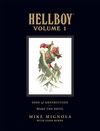
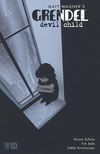
DC
Booster Gold 0
First off props to the awesome homage to the cover of Zero Hour #4. Ever since they hinted there’d be a Zero Hour story in the first issue, I’ve been sold on this book. The idea that they are referencing the first DC crossover that I ever read really excites me. From the cover it appears that this story will be focusing less on Zero Hour, and more on the Blue Beetle plot resolution, which I’m guessing is that he saves Kord, just to see him die again. Booster Gold was the surprise hit for me in 2007, and if you a fan of the DCU, you really should be reading this book.
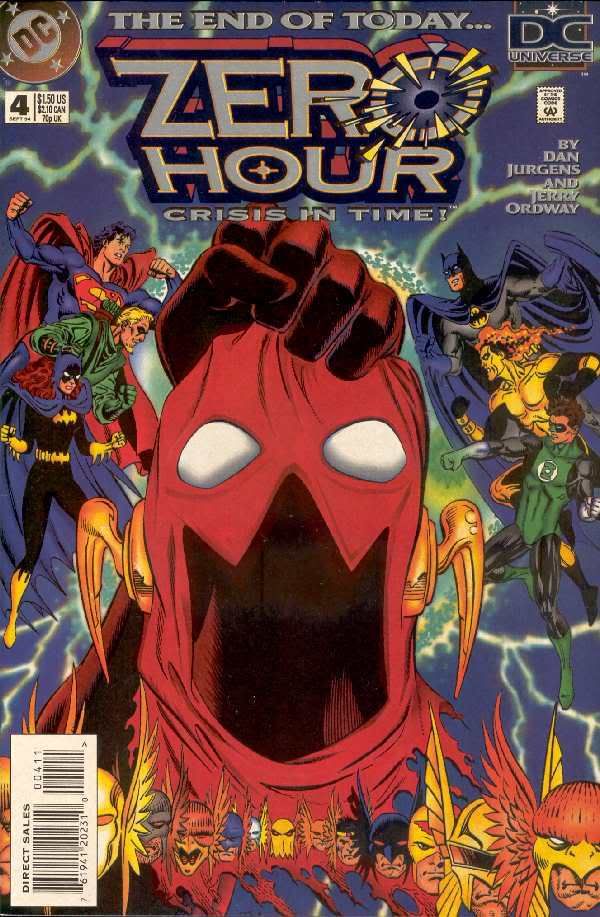
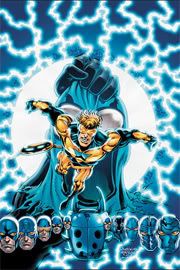
Batman 670
Grant Morrison has really been doing some interesting things with the title, and in the process has taken Batman place he hasn’t been in over 30 years. As a pretty big fan of Batman, I would be lying to say that I was a fan of some of the throwbacks that haven gone on. This issue, which is following up on his second storyline, seems a bit late for me– there was the league of Batman story and Ghul between all of this. I honestly don’t remember much about the three other personas of batman running about, but hey the issue does promises an appearance of Bat-mite. I’m curious enough to see how all of this gets pulled off.
Action Comics Annual 11
At last the conclusion to the Last Son storyline. The art and story for this series has been solid (to date), and hasn’t fumble like the OYL story. I really think five years from now when people look back at this story they will not see a late book, but an awesome story.
Action Comics 862
The conclusion of the Legion storyline. A lot of people I think have been avoiding this because of the ties, and the inherent continuity confusion that comes with the Legion. The first two issues of this story line have been amazing, and possibly the best Superman I’ve ever read. The Legion has been used well here, and you don’t need to have been following the Legion to understand their use here. Actually, this story might be a lot better if you have no previous experience with the heroes of the 31st century. If you haven’t been reading this monthly, then definitely keep an eye out for this collection of this story.
Lobo Portrait of a Bastich
DC’s out of left field solicitation for the month. Last month was the Giffen/DeMattis Justice League vol. 1 trade as a HC, this month its the first two Lobo mini series. I have some fond memories tied around the first issue of Lobo’s Back, but next to that, I’m pretty sure this stuff will not have aged well. This is just a really weird book to see get solicitation space. Maybe they have big plans for Lobo coming up in 08? Regardless this is the series explains everything you need to know about Lobo, including how he achieved his immortality.
Tiny Titans
The 3 page preview was entertaining, but will it last? I’m not sure. It might do strong sales in book stores and other non-LCS where the targeted audience can get their hands on it. In a LCS sense, I see this following the Franklin Richard trend, were it will do well and be highly talked about for the first three, maybe four issues, and then it will be forgotten and have sales figures around the level of the Teen Titan’s Go comic. This book could be a real success, if it wasn’t a monthly.
Gen13 17
Just want to point out the the Gen13 reboot is 17 issues in, and Wildcats #2 still hasn’t been shipped (and according to the most recent issue of Wizard, the script for the issue was just finished). Its a shame that the relaunch of the Wildstorm universe failed so miserably.
Image
Scud the Disposable Assassin
Scud returns as a 4 issue mini series, promising to wrap up the story line that was last seen 10 years ago. This title has a lot of street cred, but I’m surprised that there has been no mention Scud trades to help bring new readers up to speed. There are about 20 issues of the title that have been long, long out of print, and to release a mini-series tying strongly to these issues (and possibly not recapping them) seems to be depending TOO much on the street cred.

Marvel
Clan Destine
Alan Davis for me is always at his best when he is both drawing and writing his work. Look no further then his Excalibur run to see why. Because of this, I’m happy to see him back to doing double duty on something he clearly cares for, his creation of Clan Destine. I feel that the concept of the Clan, that of a large immortal super powered family, will/can do a lot better in todays environment. The only thing that may be holding this back, is what I feel its greatest strength, Alan Davis’s art. It beautiful, but it doesn’t stand out in the current market place. Its not hyper realistic ala Hitch, and its not in the Jim Lee school either. This is no way a bash on his work. But much like Mark McKone, I find those who like the style are those who truly appreciate comics.
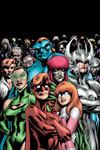
Fantastic Four
Speaking of Hitch, the start of the Hitch/Millar run on the first family begins this month. There signed on for a one year stint, and it will probably sell like gangbusters. Despite this, beyond the Byrne and Waid runs on the FF and Ultimates, I still don’t have any interest in the title. I fully believe my view of the Fantastic Four has probably been forever tainted by the work of Tom DeFalco.
Fantastic Four: Lost Adventure
While I really have no interest in the FF, I do have interest in Kirby. So ‘New’ Jack Kirby work on the FF is something I can really get behind. So where did the new work come from? Well Jack drew102 issues of Fantastic Four that were published, for what ever reason his last issue, #103, was never completed– until now. Stan Lee and Joe Sinnott (who I assume was the inker at the time), have taken this penciled pages and finished the story. Will the story stand up to today’s standards? Most likely not, but I’ll take new Kirby work where I can get it. The book also contains the original penciled pages and a reprinting of issues 108, which used some of the art in a flashback sequence. The package seems well worth the $4.99 USD.
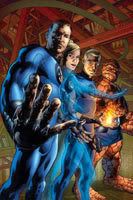
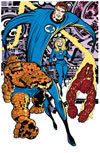
Marvel Fanfare Vol. 1Trade
…. And Marvel’s weird reprint of the month. I’m not exactly sure why they are putting this stuff back in print. The artists listed in this trade is impressive, but I still don’t hear anyone clamoring for a collection of these issues. Definitely a weird choice by the house of ideas.
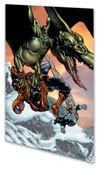
The Rest
Contraband (SLG)
From the description: “Toby picked the wrong person to turn his cell phone camera upon. A Self-style “citizen journalist,” he is documenting a group of underground video journalists who look for violent acts to film on their pone when he is discovered by agents for a cell-phone channel called “Contraband.” Forced to work for them, Toby is assigned the difficult task of finding a female activist bent on sabotaging Contraband and must navigate a difficult path where he must choose between his own safety and the greater good”. There is a lot of discussion/stories that can be drawn out of the changing view people have about the media, the role in it, and the shrinking of private space. From the before-mention description, it looks like they are approaching the story with some of these issues in mind. This book can be a hit or a miss, I’m really hoping for it to be a hit.
RASL #1 (Cartoon Books)
Jeff Smith returns to this indie world with his new title, RASL. Rasl, is an art thief who is trying to escape his past. Unlike the other art thieves who need to plan their robberies to the smallest detail, Rasl makes use of his unique ability to travel through the light between dimensions. This often allows him to steal work that is deemed impossible. It’s good to see Smith back, but I’m more excited by the fact that he is approaching a story that is as far removed from Bone as possible.
Bits and Pieces: quick one line thoughts of other things coming out this month
Princess Midnight
Andi Watson can do no wrong. Well– only wrong by writing Marvel books and doing single issue work. His work has, and I always, read better in a collected format. A new 64 page novella, while small, is enough to hold me over till his next substantial collection is released.
The Nearly Complete Essential Hembeck Archives Omnibus
Just look at that title. Just look at that cover of various Hembeck self portraits. The only thing that is missing from this is the word spotlight somewhere in the title. While the whole Hembeck phase is before my time, I’m still likely going to flip through this just to see his work for the first time.
Kick-Ass
I’ll probably skip this, but a new Mark Millar ICON book with JRJR art is definitely something to note. The book promises to be ‘the next realistic’ step in a superhero title. With that in mind, and the the title of the book, I’m seeing this being something along the lines of Nextwave and other dark hyper-violent books.
Drawn & Quarterly issues new printings on a couple of classics, the Chest Brown, I Never Liked You, and Seth’s Its a Good Life If You Don’t Weaken.
Narcopolis marks Jamie Delano return to comics in this avatar book that will play to his strengths, black magic and sci-fi.
Wizard reissues the collection of Beautiful Killer, with gorgeous art by Phil Noto.
Perhaps the coolest prop to come out sometime is the Flux Capacitor replica, being released by Diamond.
Martin Scherer enjoys reading, thinking and consuming comics in mass amounts. His most favorite day of the month in the one that marks the release of the new previews catalog. His by far not the worlds greatest boyfriend. He looks forward to hearing your comments about this, past articles or general questions about comics. Contact him via email, martin@geekscape.net